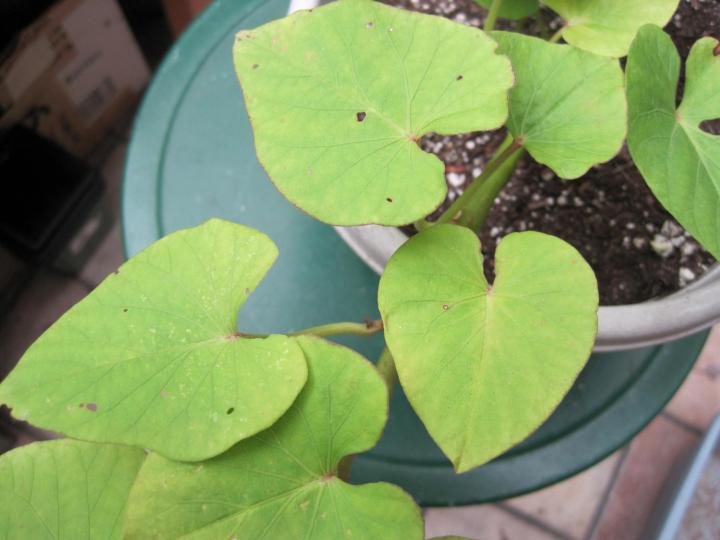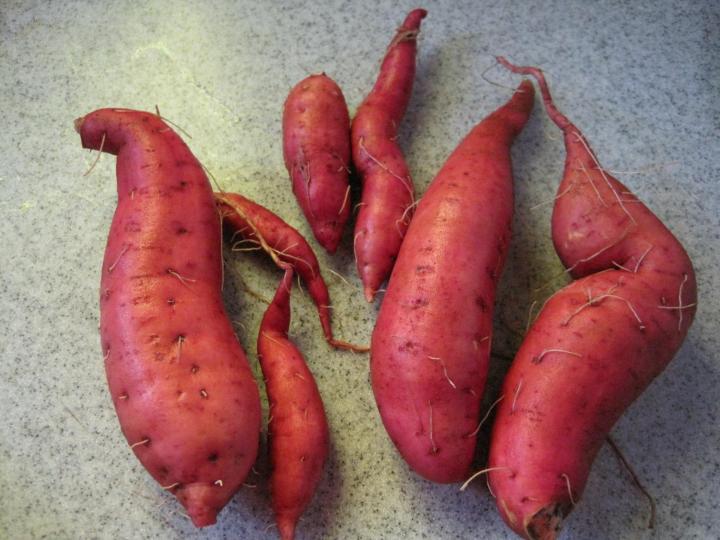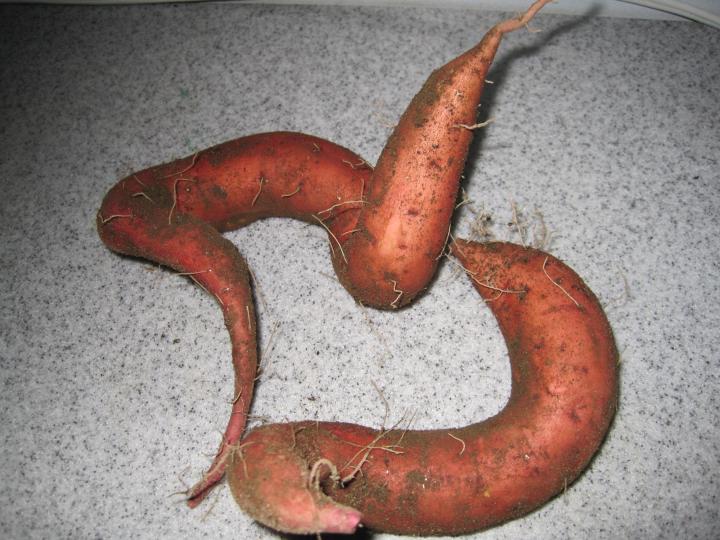
ADVERTISEMENT
Are sweet potatoes picky about how much water they get?
Tried my first bigger crop of sweet potatoes, last year, in a 100 gallon grow bag (just 4' in diameter, and 1' tall...but a big crop, for a single person!). Ended up with enough potatoes, to fill a 16" cube box!!
To cure them, I utilized a pop-up plastic tent, designed to be used like a cold frame would be. I placed a couple old towels down, put the tent over them, then arranged the sweet potatoes on the towels, leaving some air space between them. Then I put in a small container of water, and suspended a small hand towel, from a string tied to the top frame of the tent, and the end of the rag in the container of water (like a wicking set up, to water a plant would work). Finally, I placed a small ceramic heater in the corner of the tent, to provide the heat required, and placed a combination thermometer/hydrometer inside the tent, where it could be easily read, by my unzipping only the top corner of the tent's "door".
Took a little bit of fine tuning, but in less than an hour, I had the inside of that tent at 85 degrees, and 85% humidity! Thinking back on it, I probably could have placed an old blanket over the tent, to help hold in the heat, and perhaps save a little bit of electricity.... but hey, it worked, as it was intended to!
And yeah, I'm STILL eating my way through those tubers!!
Here in central Wisconsin I grow sweet potatoes in a raised bed. I cover the soil with plastic to help the soil heat up. Still have curly potatoes in various sizes. Haven't figured out why yet but I do have enough produce out of 18 plants to last the winter. Cure under the same white plastic loosely laid over the potatoes to protect them from any early frost. Next year hoping to use windows over the raised bed to form a small greenhouse. I'm from the south also so I understand you moms plight. Look into straw bed gardening. Its been a tremendous success for me. Good luck with your growing seasons!












